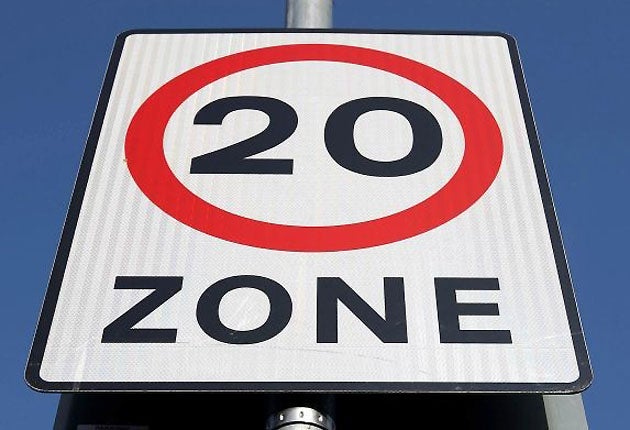Minister plans more 20mph speed zones

New proposals to allow local councils to bring in more 20mph speed-limit areas were announced today by the Government.
Until now, councils wanting to introduce 20mph limits on groups of roads have to do so in speed zones which require traffic-calming measures such as speed humps.
Today's proposals, announced by Road Safety Minister Paul Clark, do away with the need for the schemes to be accompanied by humps or other measures.
The Government is encouraging councils to introduce the 20mph schemes into residential streets and other roads where cycle and pedestrian traffic is high, such as around schools, shops and parks.
The "no-humps" plan follows a successful city-wide trial, where early indications are that casualties have dipped by 15 per cent.
The Government also today renewed its call to local councils to review speed limits on rural roads by 2011.
The Government wants councils to consider reducing the 60mph speed limit - possibly to 50mph - on the most accident-prone single-carriageway A and B roads.
Mr Clark said today: "The number of people killed and seriously injured on Britain's roads has fallen by 40 per cent since the mid-1990s and Britain now has the joint safest roads in the world. But too many pedestrians and cyclists - including many children - are still being killed or hurt on the roads around their homes and schools.
"We have seen that 20mph zones with traffic calming measures can make a real difference to the safety of local roads. But we've also looked at the latest research and listened to councils and residents who want to introduce 20mph limits on a series of roads where physical traffic calming measures aren't possible or practical."
The Government proposals were given a cautious welcome today by motoring groups.
AA president Edmund King said: "We need to introduce a broad degree of common sense when dealing with speed restrictions.
"What we don't want to see is local authorities adopting an over-zealous approach. We're certainly not keen on blanket reductions but the AA and its members back the idea of targeted reductions.
"We also support 20mph zones where they are needed. But we would like to see more varied speed limits. A 20mph restriction around a school is fine at 8.50 in the morning but not so good at 2am at night.
"Local authorities must remember that we need roads for movement. They must be careful not to introduce limits that lead to drivers getting impatient and trying to overtake all the time."
Last week a report by the London School of Hygiene and Tropical Medicine showed that the introduction of 20mph speed zones in London had reduced road injuries by more than 40 per cent over the period 1986 to 2006.
It found the benefits were most marked in young-child accident rates, with deaths or serious injuries to children reduced by half.
The report also said pedestrian injuries were reduced by just under a third and cycling casualties by 16.9 per cent.
RAC director Professor Stephen Glaister said: "Any changes to speed limits need to carry motorists with them.
"Draconian blanket changes risk alienating drivers and wasting resources. Applied correctly, road safety measures save not just lives but money, and it is worth spending time and effort to make sure policies are appropriate and respected by drivers."
Subscribe to Independent Premium to bookmark this article
Want to bookmark your favourite articles and stories to read or reference later? Start your Independent Premium subscription today.

Join our commenting forum
Join thought-provoking conversations, follow other Independent readers and see their replies